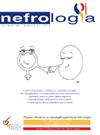Hemodialysis vascular access in the elderly: Promising results from a tertiary center
IF 2
4区 医学
Q2 UROLOGY & NEPHROLOGY
引用次数: 0
Abstract
Background
Hemodialysis patients, particularly the elderly, present challenges for vascular access (VA) creation due to age-related vascular changes and comorbidities. This study aimed to characterize outcomes related to VA in elderly patients (≥75 years) and compare them with younger patients, focusing on primary failure, maturation failure, and patency rates.
Methods
This retrospective study included patients evaluated in VA consultations between January 2019 and December 2021; patients were evaluated through physical examination and Color Doppler Ultrasound to determine the suitability of vessels for VA construction. Demographic data, proposed and created VA types were assessed. The primary outcomes were the evaluation and comparison of primary failure and maturation failure of VA in the elderly (O) and younger (Y) groups. Secondary outcomes included the assessment of primary patency and primary assisted patency at 6, 12, and 24 months in both groups.
Results
Among 167 patients, 36 were elderly. There were no significant differences in proposed and created VA types between the Y and O groups and radial-cephalic AVFs were the most commonly constructed VA in both groups.
Primary and maturation failure rates were similar (Y group: 17.3% and 5.6%; O group: 9.7% and 10.7%, respectively). Primary patency and primary assisted patency rates did not significantly differ between groups at 6, 12, and 24 months.
Conclusion
The impact of age on the feasibility of VA should not be exaggerated. Preoperative assessment and a tailored approach enable successful autologous access creation in elderly patients, resulting in outcomes comparable to those of younger patients.
老年人血液透析血管通路:三级中心有希望的结果
血液透析患者,特别是老年人,由于年龄相关的血管改变和合并症,对血管通路(VA)的形成提出了挑战。本研究旨在描述老年患者(≥75岁)与VA相关的结局,并将其与年轻患者进行比较,重点关注原发性衰竭、成熟衰竭和通畅率。方法本回顾性研究纳入2019年1月至2021年12月在VA咨询中评估的患者;通过体格检查和彩色多普勒超声对患者进行评估,以确定血管是否适合VA建设。评估了人口统计数据,建议和创建的VA类型。主要结果为老年(0)组和年轻(Y)组VA的原发性衰竭和成熟衰竭的评价和比较。次要结局包括两组患者在6个月、12个月和24个月时主要通畅和主要辅助通畅的评估。结果167例患者中,老年人36例。Y组和O组在拟建和已建室间隔类型上无显著差异,桡骨-头侧室间隔是两组中最常见的室间隔。原发性和成熟期失败率相似(Y组分别为17.3%和5.6%;O组:分别为9.7%和10.7%)。在6个月、12个月和24个月时,两组间的主要通畅率和主要辅助通畅率无显著差异。结论不应夸大年龄对体外循环可行性的影响。术前评估和量身定制的方法使老年患者能够成功地建立自体通路,其结果与年轻患者相当。
本文章由计算机程序翻译,如有差异,请以英文原文为准。
求助全文
约1分钟内获得全文
求助全文
来源期刊

Nefrologia
医学-泌尿学与肾脏学
CiteScore
3.40
自引率
7.70%
发文量
148
审稿时长
47 days
期刊介绍:
Nefrología is the official publication of the Spanish Society of Nephrology. The Journal publishes articles on basic or clinical research relating to nephrology, arterial hypertension, dialysis and kidney transplants. It is governed by the peer review system and all original papers are subject to internal assessment and external reviews. The journal accepts submissions of articles in English and in Spanish languages.
 求助内容:
求助内容: 应助结果提醒方式:
应助结果提醒方式:


